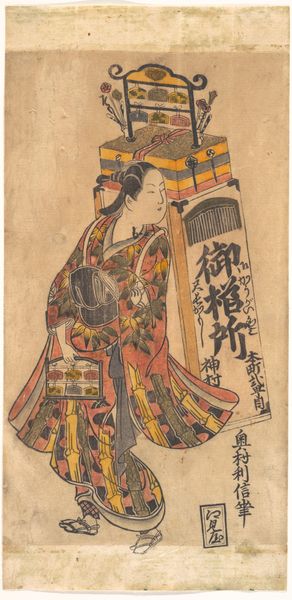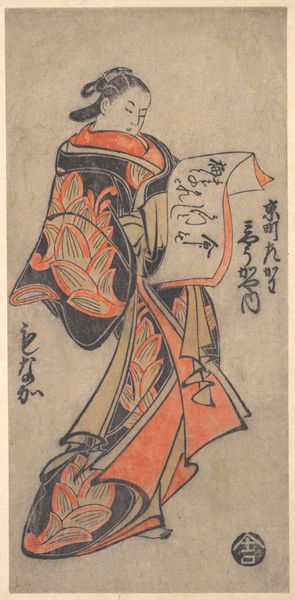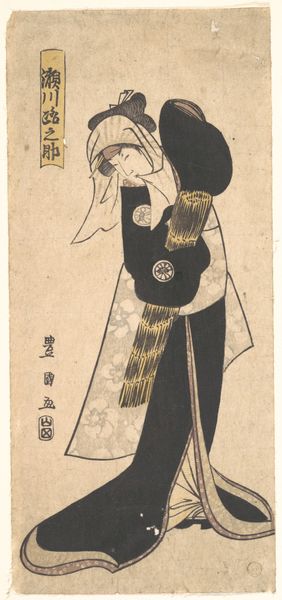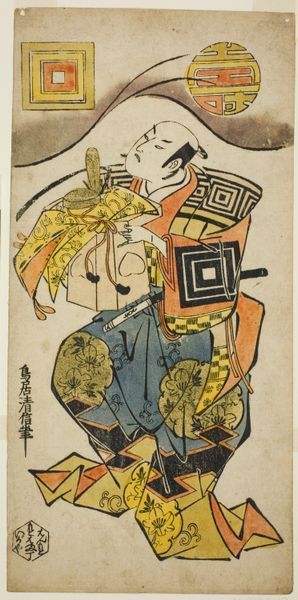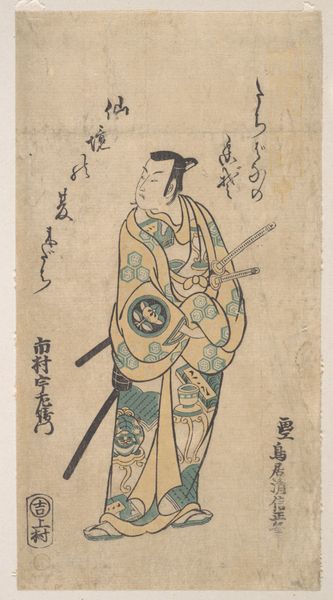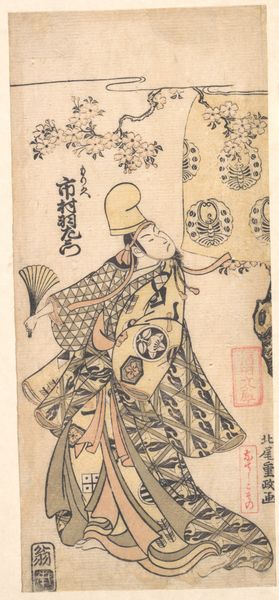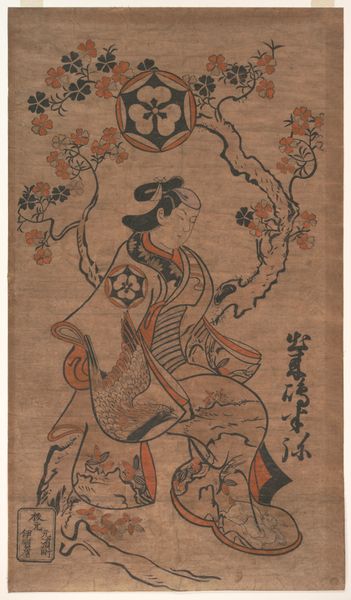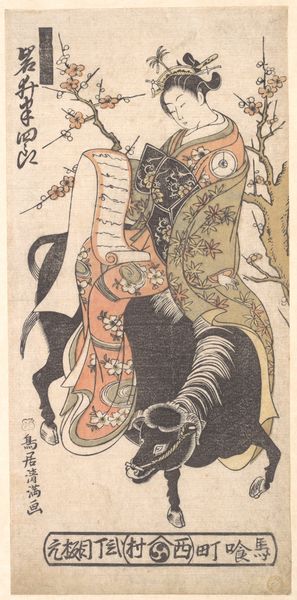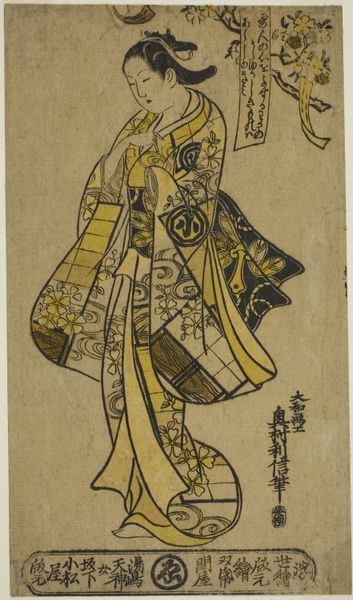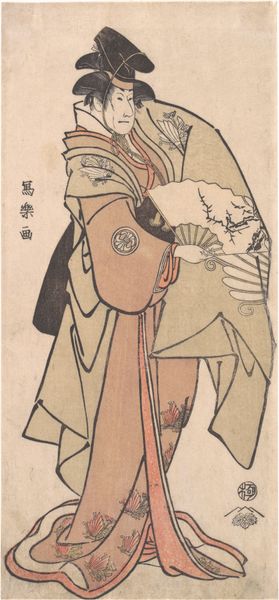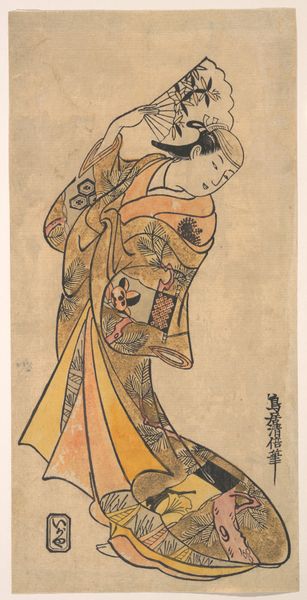
The Actor Sanagawa Ichimatsu 1st as a Wakashu (Fashionable Youth) in the Drama "Momo–Chidori Shiraume" 1740 - 1760
0:00
0:00
print, woodblock-print
#
portrait
#
ink drawing
#
pen drawing
# print
#
asian-art
#
ukiyo-e
#
woodblock-print
#
genre-painting
Dimensions: H. 11 5/8 in. (29.5 cm); W. 5 3/4 in. (14.6 cm)
Copyright: Public Domain
This woodblock print was made by Torii Kiyonobu I in Japan, depicting the actor Sanagawa Ichimatsu in character. Woodblock prints like this one, called ukiyo-e or "pictures of the floating world," became popular in the Edo period, reflecting the rising merchant class and their embrace of theater and pleasure districts. Here, the actor is shown as a wakashu, a fashionable youth, in a specific drama. The image itself carries meaning; the actor's robe displays symbols – a fan, bamboo, and flowers – which would have resonated with the audience, perhaps hinting at the character’s role or the play's themes. Kabuki theatre itself was a contested social space, sometimes censored by authorities for its perceived disruption of social order. Prints like this one further popularized the actors and their roles, contributing to the vibrant, sometimes subversive, urban culture of Edo Japan. To fully understand this print, we can consult playbills, theatre records, and social histories of the Edo period. The art historian's role is to uncover these layers of meaning, connecting the image to its complex social and institutional context.
Comments
No comments
Be the first to comment and join the conversation on the ultimate creative platform.
